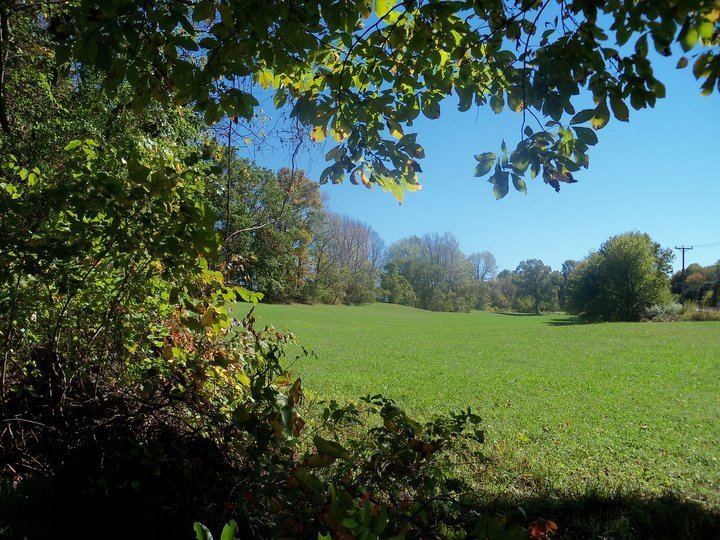Founded 1785 Unemployment rate 4.9% (Apr 2015) | Area 1,080 km² Population 151,377 (2013) | |
 | ||
Points of interest Nathan Hale Homestead, William Benton Museum, New England Civil War, Bigelow Hollow State Park, Crystal Lake - Connecticut Destinations | ||
Tolland County is a county located in the northeastern part of the U.S. state of Connecticut. As of the 2010 census, the population was 152,691. Tolland County is incorporated into thirteen towns and was originally formed on 13 October 1785 from portions of eastern Hartford County, Connecticut and western Windham County, Connecticut.
Contents
- Map of Tolland County CT USA
- Geography
- Adjacent counties
- 2000 census
- 2010 census
- Income
- Race
- In popular culture
- References
Map of Tolland County, CT, USA
Tolland County is included in the Hartford-West Hartford-East Hartford, CT Metropolitan Statistical Area.
Counties in Connecticut have no governmental function: all legal power is vested in the state, city, and town governments. The office of High Sheriff in Connecticut counties was officially abolished by ballot in 2000, and corrections and court service were transferred to the state marshals. Tolland County has the same boundaries as the Tolland Judicial District.
Geography
According to the U.S. Census Bureau, the county has a total area of 417 square miles (1,080 km2), of which 410 square miles (1,100 km2) is land and 6.8 square miles (18 km2) (1.6%) is water. It is the second-smallest county in Connecticut by land area and smallest by total area.
Adjacent counties
2000 census
As of the year 2000, there were 136,364 people, 49,431 households, and 34,156 families residing in the county. The population density was 332/sq mi (128/km²). [1] There were 51,570 housing units at an average density of 126/sq mi (49/km²). The racial makeup of the county was 92.34% White, 2.72% Black or African American, 0.21% Native American, 2.27% Asian, 0.03% Pacific Islander, 1.08% from other races, and 1.35% from two or more races. 2.84% of the population were Hispanic or Latino of any race. 14.9% were of Irish, 14.1% Italian, 9.9% English, 8.8% French, 8.2% German, 8.0% Polish and 5.7% French Canadian ancestry. 90.5% spoke English, 2.9% Spanish and 1.6% French as their first language.
There were 49,431 households out of which 33.30% had children under the age of 18 living with them, 58.00% were married couples living together, 8.00% had a female householder with no husband present, and 30.90% were non-families. 23.50% of all households were made up of individuals and 7.70% had someone living alone who was 65 years of age or older. The average household size was 2.54 and the average family size was 3.03.
In the county, the population was spread out with 23.10% under the age of 18, 12.90% from 18 to 24, 30.70% from 25 to 44, 23.20% from 45 to 64, and 10.20% who were 65 years of age or older. The median age was 36 years. For every 100 females there were 100.60 males. For every 100 females age 18 and over, there were 99.50 males.
The median income for a household in the county was $59,044, and the median income for a family was $70,856. Males had a median income of $46,619 versus $34,255 for females. The per capita income for the county was $25,474. 5.60% of the population and 2.90% of families were below the poverty line. Out of the total people living in poverty, 4.60% are under the age of 18 and 5.20% are 65 or older.
2010 census
As of the 2010 United States Census, there were 152,691 people, 54,477 households, and 36,707 families residing in the county. The population density was 372.2 inhabitants per square mile (143.7/km2). There were 57,963 housing units at an average density of 141.3 per square mile (54.6/km2). The racial makeup of the county was 89.8% white, 3.4% Asian, 3.3% black or African American, 0.2% American Indian, 1.6% from other races, and 1.8% from two or more races. Those of Hispanic or Latino origin made up 4.3% of the population. In terms of ancestry, 22.0% were Irish, 16.8% were Italian, 14.3% were English, 14.2% were German, 10.6% were Polish, 5.6% were French Canadian, and 3.5% were American.
Of the 54,477 households, 31.5% had children under the age of 18 living with them, 54.9% were married couples living together, 8.6% had a female householder with no husband present, 32.6% were non-families, and 24.2% of all households were made up of individuals. The average household size was 2.51 and the average family size was 3.00. The median age was 38.3 years.
The median income for a household in the county was $77,175 and the median income for a family was $91,631. Males had a median income of $62,579 versus $46,818 for females. The per capita income for the county was $33,108. About 3.2% of families and 6.4% of the population were below the poverty line, including 5.2% of those under age 18 and 4.6% of those age 65 or over.
Income
Data is from the 2010 United States Census and the 2006-2010 American Community Survey 5-Year Estimates.
Race
Data is from the 2007-2011 American Community Survey 5-Year Estimates, ACS Demographic and Housing Estimates, "Race alone or in combination with one or more other races."
In popular culture
Tolland County is briefly referenced in the novel Moby-Dick by Herman Melville as the place that the ill-fated shipmate, Pip, comes from.
